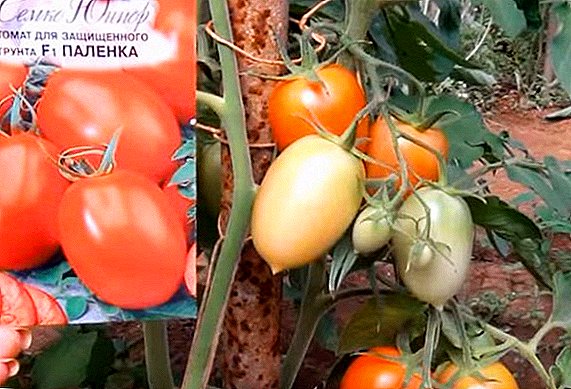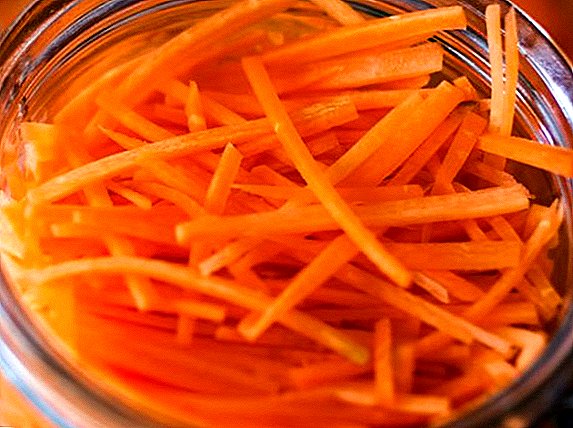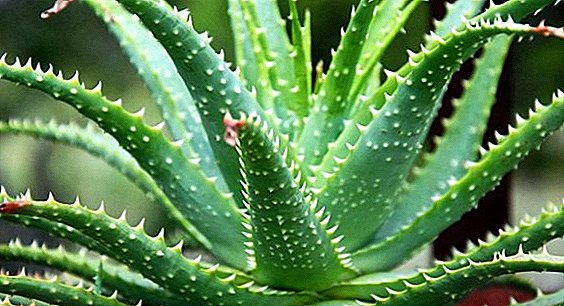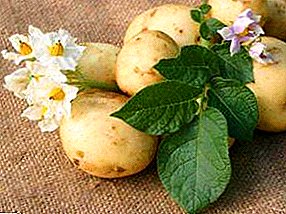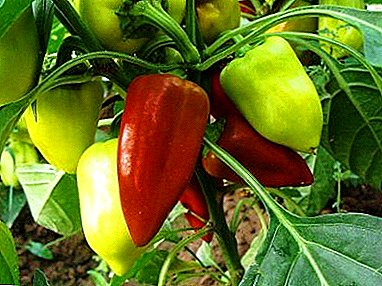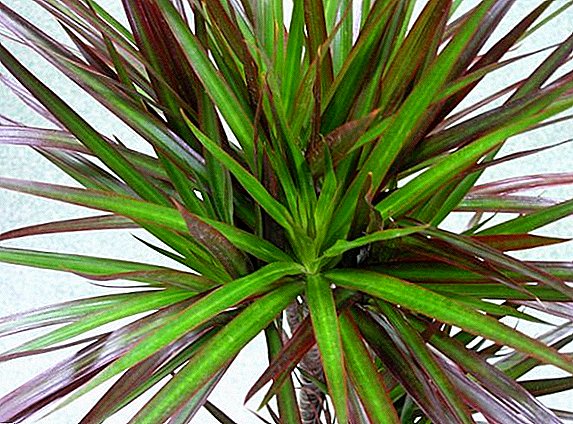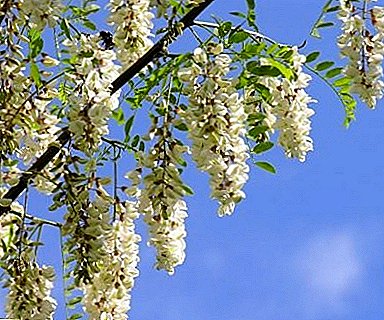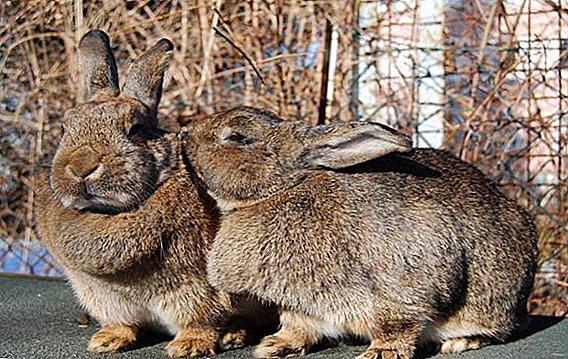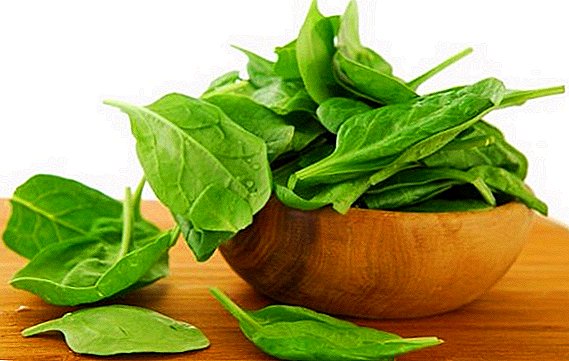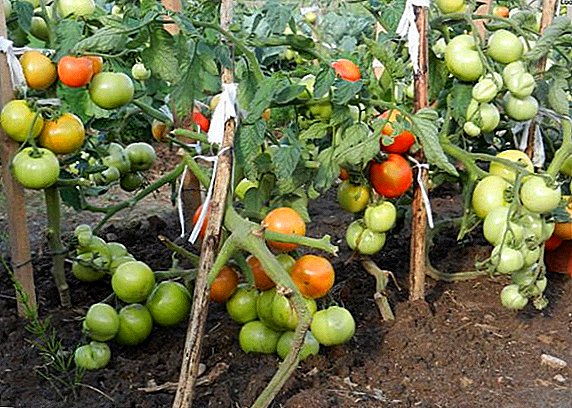 “Summer Garden F1” is such a beautiful and romantic name for a superearly tomato variety. This variety is distinguished by unpretentious care, resistant to many diseases typical of tomatoes, gives the opportunity to feast on tasty and fragrant berries in early August. Today, the article will look at what else is characteristic of this variety and how to grow it on your own plot.
“Summer Garden F1” is such a beautiful and romantic name for a superearly tomato variety. This variety is distinguished by unpretentious care, resistant to many diseases typical of tomatoes, gives the opportunity to feast on tasty and fragrant berries in early August. Today, the article will look at what else is characteristic of this variety and how to grow it on your own plot.
Variety description
"Summer Garden f1" refers to ultra-early hybrid high-yielding varieties of tomatoes for cultivation in the open field and greenhouse. The variety was included in the state register in 2001. Bushes non-standard, determinant, grow to 30-50 cm, compact. They need to be formed and tied up in the process of growth. Up to 3-4 brushes are formed on bushes, on each brush there are 5-8 fruits. Ripening of tomatoes occurs 90-100 days after planting seeds. 
Distinctive features and advantages of this variety:
- resistant to late blight;
- tolerates sudden changes in temperature (incl. during fruit set);
- has a stretched fruit ripening period;
- does not require staving;
- the versatility of the use of fruits;
- high taste, good keeping quality and transportability of fruits.
Fruit characteristics and yield
This variety is high-yielding - from 1 square. m. you can collect up to 12-17 kg per season, in terms of bushes it turns out 2.5-4 kg from one bush (subject to compliance with agricultural technology). Fruits are obtained symmetrical round shape, weighing 100-140 g, with a smooth skin. At the stage of technical ripeness tomatoes are whitish in color, the green spot on the stem is absent. At the stage of biological ripeness painted in red or red-orange shade, multichamber, very dense and fleshy.
Such varieties can be attributed to hybrid tomatoes: “Katya”, “Semko-Sinbad”, “Slot f1”, “Irina f1”, “Red Guard F1”, “Blagovest”, “Lyubasha”, “Verlioka”, “Bokele F1” "," Spassky Tower F1 "," Torbay F1 "," Red Red "," Pink Paradise "," Pink Unikum "," Openwork F1 "," Petrusha-gardener "," Pink Bush "," Monomakh's Hat "," Big Mommy, Explosion, Raspberry Miracle and Masha F1 Doll.
Tomatoes of this variety are excellent for use in raw form, as well as for the preparation of preservation. Due to their density and elasticity, they tolerate transportation well and have a long-term keeping quality. 
Selection of seedlings
Sometimes, due to lack of time, space or for other reasons, it is not possible to grow seedlings on your own - in this case, you can always buy ready-made ones. Before buying seedlings of the Summer Garden f1 variety, it will be useful to study the general requirements for tomato seedlings:
- the presence of 6-8 true leaves;
- age of seedlings within 45-60 days;
- stem thickness about 5 mm (about the thickness of the handle);
- all leaves, including the lowest, cotyledon leaves, must be resilient, healthy, free from rot, spots and other damages and deformations;
- seedlings should be in boxes with the substrate, and not in plastic bags;
- the back of the leaves should be examined for the presence of eggs of pests;
- the leaves should not be of a poisonous green color - this indicates excessive nitrogenous fertilizer application for accelerated cultivation.
Important! You can not buy seedlings with ovaries - such bushes are much longer and more difficult to take root, formed ovaries fall off, you have to wait for the next maturity longer.
Soil and fertilizer
The soil for tomatoes must comply with the following characteristics: to be breathable, with neutral acidity, loose and at the same time moisture-absorbing. 
The optimal composition of the soil is as follows:
- 0.5 parts of sand (preferably river);
- 1 part of humus (can be replaced by biohumus);
- 1 part of the garden land;
- 2 parts of peat (you can replace the purchase mix for seedlings).
For fertilizer, apply urea, superphosphate and potash fertilizer to the soil.
To enrich the soil, you need to add ready-made complex mineral fertilizers according to the instructions, or you can add urea, superphosphate and potash fertilizer yourself. Wood ash will help reduce soil acidity.  Urea
Urea
Growing conditions
Below we consider the general conditions of cultivation of this variety in your area:
- Temperature. The optimal temperature regime during the day and at night is as follows: + 20-25 ° С and + 18-20 ° С, respectively. Most varieties do not respond well to changes in temperature, but the Summer Garden f1 variety shows high resistance to such fluctuations.
- Lighting. Tomatoes need long light - at least 8-10 hours, optimally 12 or more. We can not allow a sharp transition from low light to high and vice versa.
- Humidity and watering. The optimal level of humidity at the root zone is 80-90%, and the above-ground part is 50%: that is, tomatoes like relatively dry air and moist soil. It is impossible to allow neither the earthen clod to dry nor excessive moisture. Watering the bushes is necessary depending on their age, weather conditions, on average 1-2 times a week. Since the plants of this variety are stunted, up to 3 liters per bush will suffice.
- Feeding. Several times are carried out when growing seedlings, then during the flowering period and at the beginning of the ripening of tomatoes, a total of about 5 times per plant development cycle.

Growing from seed to seedlings at home
Next, we consider how to independently grow strong and healthy seedlings, ranging from seed preparation to seedling transplantation into the ground. In this process, it is important to avoid mistakes that will certainly affect the survival rate and fruiting of tomatoes.
Sow such high-yielding varieties of tomatoes as: "Sinbad", "Rose of the Winds", "De Barao", "Gulliver", "Caspar", "Bull's Heart", "Casanova" and "Collective Farm Yield".
Seed preparation
It is necessary to use seed material up to 4-5 years old. Purchased seeds are sold already processed, so there is no need for disinfection. If you use your own raw materials or seeds purchased on the market, they must be treated for fungal and other infections. For this purpose, the seeds can be soaked for 20 minutes in a 1% solution of potassium permanganate or 1-2 hours in a solution of Fitosporin (according to the instructions). Next, the seeds need to soak for 18 hours (not more), poured into a container and covered with a thin layer of water or wrapped in a damp cloth.
Did you know? Every year in the last week of August in the small Spanish town of Bunol a tomato festival takes place, in which berries are used as "weapons". The festival has been held since 1945, during this time more than 3 million berries were used!The soil should also be cultivated for future seedlings, especially if it is home garden soil. Heat treatment is considered the most effective: heating in the oven at 200 ° C for 15 minutes or in a microwave oven at a power of 850W for a couple of minutes. After treatment, it should take at least a week before planting the seeds to restore beneficial microflora.

Content and location
For growing seedlings, you can use different capacities:
- plastic cassettes for seedlings;
- peat cups;
- plastic disposable cups;
- any plastic shallow packaging from food.
Choose the right capacity for seedlings.
Sprouts should get enough sunlight and no shading. If there is not enough light, you must use lamps. The temperature for normal germination of seeds should be in the range of 25-30 ° C. If possible, place containers with seedlings near heat sources.
Seed planting process
Seed planting optimally carried out in April. Capacities for seedlings need to be filled with prepared decontaminated soil, moistened with warm water. If you use large containers, you need to make furrows at intervals of 4 cm and a depth of 1.5-2 cm. When laying seeds, the distance between them should be about 3-4 cm. If you use separate containers, you just need to make holes of a specified depth ( in this case there will be no need for the first pick of the seedlings). Capacity should be covered with clear glass or film to maintain a constant microclimate and humidity. 
The time of appearance of seedlings depends on the temperature: the higher it is, the faster the first sprouts will appear:
- Below 18-20 ° C - 2 weeks after sowing.
- In the range of 20-25 ° C - a week after sowing.
- Within 25-30 ° C - 4 days after sowing.
Seedling care
When the first seedlings appear, it is necessary to create the following conditions:
- Lighting. The total duration of daylight hours should be about 15 hours, with poor lighting, be sure to use lamps.
- Temperature. Maintained at 20-25 ° C.
- Watering. The first 1-2 weeks humidity should be very high, about 90-95%. Since the seedlings at this time are under the film, you can do without frequent watering. Determine the need for moisture on the ground - its top layer should not dry out.
- Ventilation. In the first 1-2 weeks of capacity, it is necessary to slightly open up to fresh air to the seedlings. You can not immediately completely remove the shelter. After two weeks, the film and glass can be removed.
- Picking If the plants are planted in separate spacious containers, there is no need for the first pick. If the seeds are planted in a common container, pickling should be carried out when the first true leaves appear (approximately 7-10 days after the appearance of the seedlings). The second picking in large containers (about 0.5-1 l) is carried out in a month.
- Top dressing. First held in 2-3 weeks from the appearance of seedlings, then weekly until planting seedlings into the ground. You can use the purchased biohumus in the dosage specified by the manufacturer.
- Hardening and preparation for transplantation. Regular, gradual and increasing airing of seedlings contributes to its hardening and endurance. It is also useful to gradually bring seedlings to fresh air under the sun's rays.
Transplanting seedlings to ground
For permanent seedlings of the variety "Summer Garden F1" transplanted at the age of 50-55 days. According to the calendar, this occurs approximately at the end of May or the beginning of June. It is possible to determine the time of transplanting along the seedlings - when the flower brushes appear on the seedlings, the transplantation must be performed within 1-2 weeks: if this process is delayed, the yield and survival rate can significantly decrease. The planting scheme is as follows: the distance between the beds is about 70 cm, between the bushes in the garden - about 40 cm.  Tomato planting scheme
Tomato planting scheme
Phased transplanting process:
- A couple of hours before planting, seedlings need to be moistened for better extraction from the pot.
- In the ground it is necessary to dig holes, slightly larger in size than the containers with seedlings, moisten, add humus.
- Seedlings carefully removed from the container, trying not to injure the root system. Deepen the hole, covering the ground with 1-2 centimeters of the stem.
- Once again we moisten the hole and fall asleep with soil.
Agrotechnics cultivating varieties in the open ground
After planting the seedlings at a permanent place, an equally important stage in the care of the bushes begins. Next, we consider the main recommendations on the content, difficulties and errors, the rules for the storage and collection of fruits.
Outdoor conditions
Tomato variety "Summer Garden F1" is perfect for film shelters, and for growing in unprotected soil. There will be no differences in growth and fruiting of tomatoes, however, it is necessary to plant seedlings in open ground in the beginning or in the middle of June, and for film shelters it is possible already in the middle of May. Also in the greenhouse bushes can grow to an impressive height (100-120 cm), in contrast to the compact size of plants on open ground.  When grown in open ground, you need to successfully pick up a place: it must be sunny, protected from the winds, without stagnation and moisture, with fertile loose soil. It is also important to follow the rules of crop rotation: the best predecessors for tomatoes are cucumbers, beets and cabbage, green manure plants, onions, turnips, green crops and legumes.
When grown in open ground, you need to successfully pick up a place: it must be sunny, protected from the winds, without stagnation and moisture, with fertile loose soil. It is also important to follow the rules of crop rotation: the best predecessors for tomatoes are cucumbers, beets and cabbage, green manure plants, onions, turnips, green crops and legumes.
Watering
All tomatoes are moisture-loving plants, and this variety is no exception. Watering the bushes should be abundant, the frequency is 3-4 days, but to a greater extent depends on weather conditions. For irrigation it is necessary to use soft, separated water at room temperature. The best time is early morning or evening (after the heat subsides). Tomatoes should be watered strictly under the root, at least 2-3 liters of water should be used for one adult bush.
Important! You can not water the bushes with cold water on top of the leaves!
Soil loosening, mulching and weeding
Loosening the soil should be carried out every time after watering - this will allow the soil to remain moist longer, ensure effective air flow, as well as warming. The minimum frequency of loosening is every two weeks, this procedure should be combined with weeding the beds from weeds. After planting the seedlings, the first 2-3 weeks of loosening should be 10-15 cm, after this period it is allowed to loosen only to a depth of 8 cm in order to avoid damage to the roots.  To more effectively retain moisture after watering, the soil is mulched with freshly cut grass or sawdust. Variety of tomatoes "Summer Garden F1" also responds well to hilling. The first procedure is carried out in 2-3 weeks after planting seedlings in the ground, repeated after 2 weeks.
To more effectively retain moisture after watering, the soil is mulched with freshly cut grass or sawdust. Variety of tomatoes "Summer Garden F1" also responds well to hilling. The first procedure is carried out in 2-3 weeks after planting seedlings in the ground, repeated after 2 weeks.
Masking
Bushes of this variety need to be formed. To do this, remove the stepsons on the bottom 6 sheets. It is very important to remove the stepsons in time, not allowing them to grow more than 5 cm: the plant spends many nutrients on the formation of lateral shoots, and not fruits. It is believed that the stepson with a length of 15 cm is equal to 2-3 kg of yield. They should not be removed “under the root”, but leaving a small centimeter process to prevent the growth of a new shoot in this place. Pasynkovaya procedure should be carried out in the morning in dry weather. 
Garter
Since in the open field bushes of this variety grow to 50 cm, they do not need a garter without fail. But to maintain the bushes during the pouring of the fruit, you can resort to a simple and effective method of garter - with the help of stakes. They can be made of wood or metal, it is necessary to calculate the length of stakes as follows: the length of a bush is + 20-25 cm for a depression in the ground. Deepen the stakes should be at a distance of 10 cm from the stem, so as not to injure the roots. Then you need to tie the plant gently and loosely with a string or strong thread.
Learn how to tie up tomatoes in the open field and in the greenhouse.
Top dressing
After transplanting seedlings into open ground, you need to carry out several fertilizing. Their frequency depends on the fertility of the soil in your area. Be sure to make additional feeding during the period of active flowering and fruit formation, which in calendar terms corresponds to the beginning and end of July. 
What substances must be applied to the soil:
- superphosphate;
- magnesium sulfate;
- potassium sulfate.
Disease and Prevention
This variety is resistant to many diseases typical of tomatoes, including late blight. However, in order to prevent it is recommended to treat the bushes from this fungal disease. Spraying is carried out three times with a 10-day interval. Since the spores of the phytophtoras very quickly adapt to poisons, it is recommended to alternate fungicides for treatment with different active substances. You can use these drugs: "Fitosporin", "Ekosil", "Kvadris", "Ridomil Gold."  Phytosporin
Phytosporin
Harvesting and storage
Collection of fruits of this variety begins from the first days of August. When crop fails, remember these rules:
- at the beginning of ripening, the frequency of harvesting is once every 5 days; at the peak of ripening, the berries should be harvested every 2-3 days;
- pick tomatoes need in dry weather in the evening;
- it is undesirable to wait until the tomatoes are poured red on the bushes.At the stage of milk maturity (upon reaching the maximum varietal size and weight, but still greenish-white) they can be collected and dispensed in boxes. This will accelerate the ripening of other fruits on the hand;
- Tomatoes that ripen to a red hue on the bushes should preferably be eaten fresh or canned, since they have a shorter shelf life.
Did you know? When ripe tomatoes emit gas - it contributes to the speedy ripening of the fruit. Experienced gardeners use this trick: ripe tomatoes are added to the boxes to speed up ripening, and reddened seeds are immediately removed from the boxes to extend the shelf life.
Possible problems and recommendations
Despite the fact that, in general, this variety is considered unpretentious, when growing, novice gardeners may encounter such difficulties:
- twisting foliage. Indicates a lack of nitrogen or excessive moisture. The problem can be solved by fertilizing and reducing the frequency of irrigation;
- uneven or weak color of the fruit. This problem arises as a result of lack of potassium or non-compliance with the temperature regime. To eliminate the problem, you need to make potassium supplements and harvest at the stage of milk maturity;
- underdevelopment, miniature fruit, cracking. These deformations occur when the irrigation regime is not observed, high humidity and lack of sunlight.
 Some gardeners who have tried this variety claim uneven dimensions of the fruit, a small number of ovaries. Others, on the contrary, speak of high yields from bushes of such compact size. However, it should be understood that the yield and characteristics of the fruit are directly dependent on the conditions on the site and the characteristics of care. Undoubtedly, you can make a conclusion about the merits and demerits of the variety after a personal "acquaintance" in the process of growing.
Some gardeners who have tried this variety claim uneven dimensions of the fruit, a small number of ovaries. Others, on the contrary, speak of high yields from bushes of such compact size. However, it should be understood that the yield and characteristics of the fruit are directly dependent on the conditions on the site and the characteristics of care. Undoubtedly, you can make a conclusion about the merits and demerits of the variety after a personal "acquaintance" in the process of growing.
Reviews from the network
Tomatoes Summer Garden can grow both in open field and in the greenhouse. I plant some of the seedlings in the greenhouse, and some under cover. The first tomatoes begin to form by the beginning of July. They fully ripen by early August. Ripe tomatoes are painted in red-orange color. They have a thick skin, a round shape, sweet flesh and excellent taste. This variety is a low determinant plant. The height of the bush is about 35 centimeters. Up to four large tomato brushes are formed on each plant. At least eight fruits are fastened on each of them.




